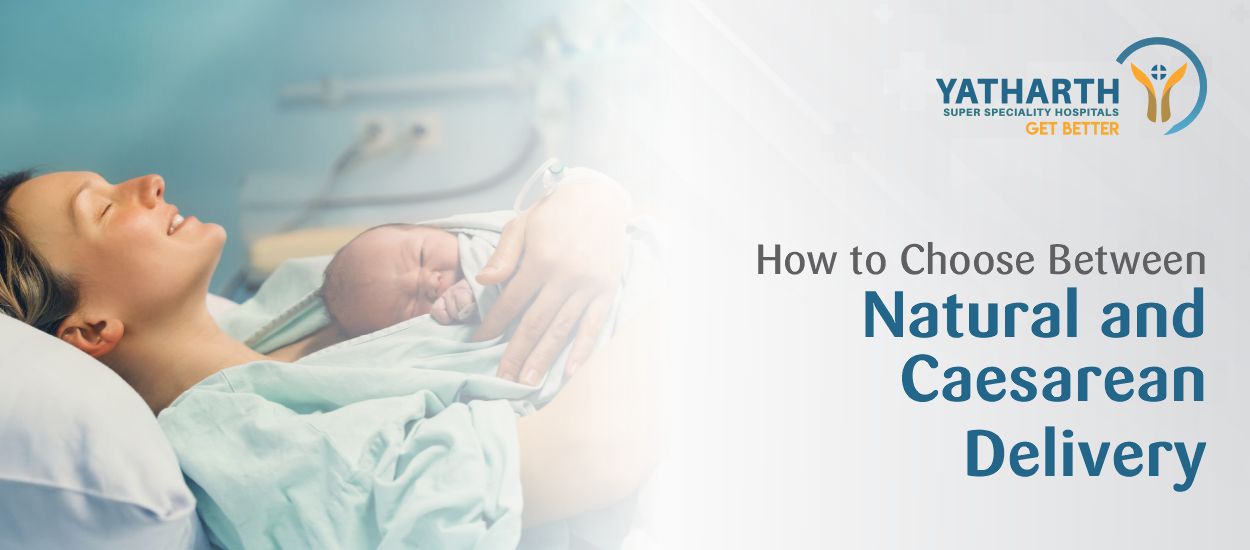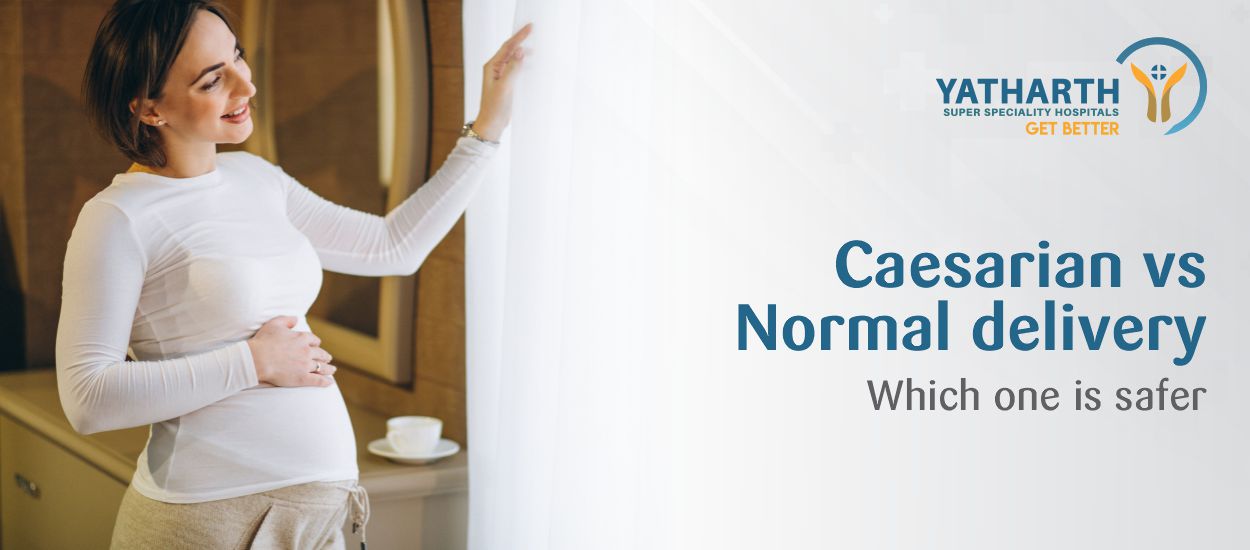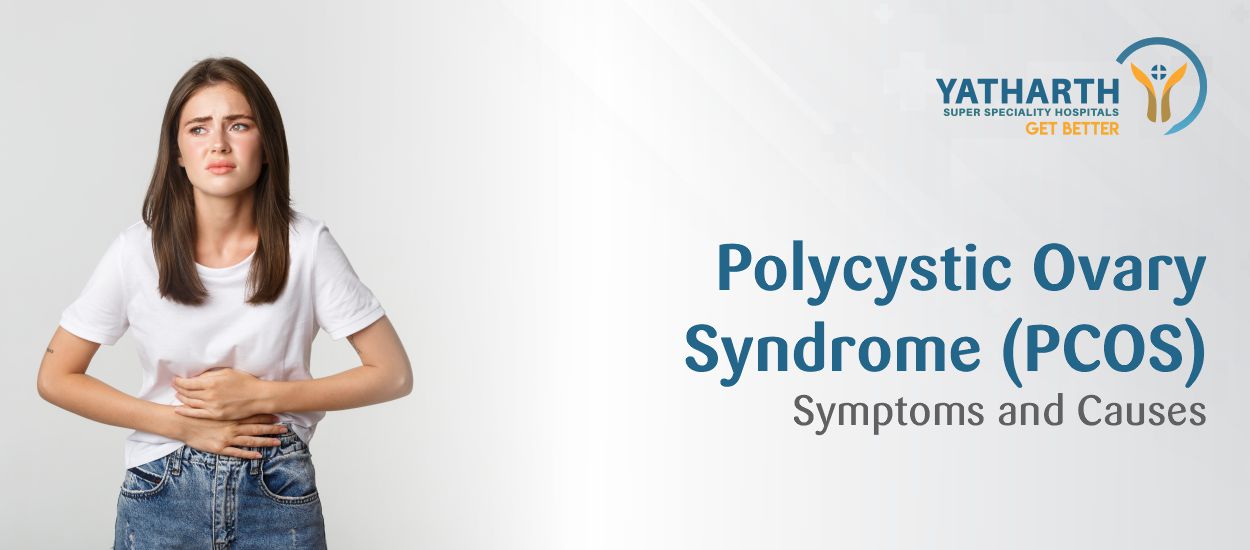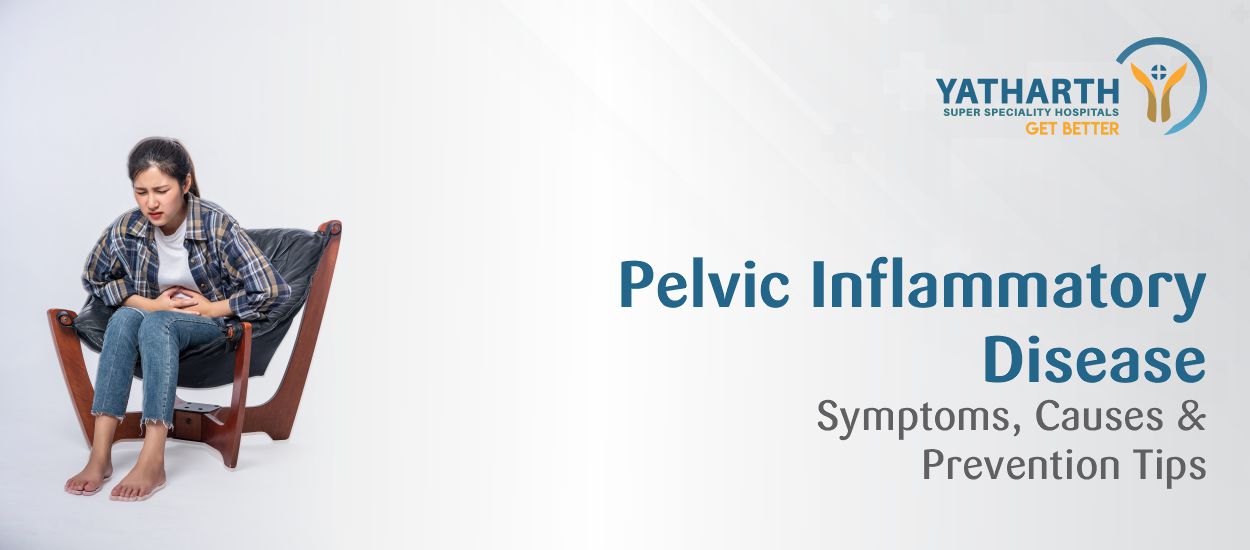Giving birth to her child can be an extremely profound experience for any woman. Even as eager parents look forward to childbirth, one crucial decision can leave them in a dilemma – what should be the mode of delivery? While natural or vaginal births are deemed safer than C-sections, the latter can often be a better, safer method of delivery both for the mother and her baby, depending on certain circumstances. To decide what is better for you, it’s necessary to first understand the pros and cons of both processes.
Caesarean Section Deliveries
C-section refers to a surgical procedure wherein the baby is delivered via incisions made in the mother’s abdomen and uterus. Generally, this method is recommended if vaginal delivery could pose a risk to the mother or the baby’s health or when complications are expected during labour.
Natural or Vaginal Birth Deliveries
Among many pregnant women, vaginal birth is the preferred mode of delivery. This is because it is seen as a less risky option and considered easier on the woman’s body, unlike the C-section. However, there can be some issues with this method, just as in C-sections.
Understanding Key Differences Between the Two
The main difference between both methods lies in how a baby is delivered. In C-section, the delivery takes place through an incision made in the woman’s abdomen and uterus. Conversely, the baby is born via the birth canal in a vaginal delivery. Also, the labour progress, pain level and recovery time are different in each process as highlighted below:
-
Labour duration: In the two methods, the duration a woman undergoes in labour could differ vastly, particularly in the case of a planned C-section. Usually, C-sections last between 45 minutes to an hour. On the other hand, a woman may be in labour for anywhere between 12 and 14 hours during a vaginal birth.
-
Recovery time: A full recovery from C-section will generally require six to eight weeks. Further, the woman will need to be hospitalised for a longer period. For natural births, besides a shorter stay in the hospital, full recovery is possible within approximately two to six weeks.
-
Pain levels: This is an extremely subjective issue since every woman won’t experience pain in the same way. Nevertheless, in C-section, a woman will feel little or almost no pain as she would be numbed or under general anaesthesia. But her recovery could be more painful compared with a woman who had a vaginal or natural birth experience.
Pros and Cons of Vaginal Birth Deliveries
The pros of vaginal births are the shorter recovery time versus C-sections with a longer duration for full recovery. Moreover, a vaginal or natural birth offers the mother, baby and family a unique, personalised experience.
Having said that, one must remember that a vaginal birth will be painful. Nonetheless, modern medical interventions help in reducing the intensity of pain during childbirth, if the mother so desires.
Pros and Cons of C-section Deliveries
For women expecting a high-risk pregnancy, those delivering multiple babies with first one in breech position, or in conditions like placenta previa, inadequate pelvis, C-sections are always recommended. On the flip side, women with a C-section will stay longer in the hospital. Additionally, there could be a higher risk of complications in subsequent pregnancies following a C-section and the option of having a vaginal birth is foreclosed. Therefore, a woman should discuss these issues with her doctor or gynaecologist if she has any queries or concerns.
What is an Emergency C-section?
An emergency C-section is done if the mother or baby is at risk. This could happen irrespective of whether a vaginal birth or C-section was scheduled. While the procedure in an emergency C-section is similar to a planned C-section, every woman will meet with a different experience according to her needs and medical history. Recovery from both emergency and scheduled C-sections will be roughly the same.
Reasons for Choosing C-section
Though the procedure is safe and common, C-sections have more risks than vaginal childbirth. As a result, they are not recommended unless required. But a woman may choose to have her baby delivered through C-section if she so wishes.
There are some non-medical reasons why parents could prefer a C-section compared to a vaginal birth:
-
More control: ?Expectant parents enjoy the flexibility of planning their baby’s birth date and preparing for the same. Furthermore, it limits their anxiety of waiting for labour to begin.
-
Apprehensions of pain: Another big reason mothers-to-be may choose a C-section is their fear of pain. A C-section helps them avoid this pain and the labour that precedes a vaginal birth.
Is Vaginal Birth Possible After C-section?
VBAC (vaginal birth after C-section) may be possible. But this depends on some key factors that determine a woman’s ability to have a VBAC. This includes the kind of incision made during her C-section, whether other surgeries were performed on her abdominal region, the position of her baby and allied health concerns. However, VBAC runs the risk of blood loss, infections, uterine rupture, etc. While rare, the opening of a previous C-section scar or uterine rupture remains a risk. A uterine rupture is a medical emergency necessitating an emergency C-section due to the risk it poses for the mother and child.
Postpartum Recovery Outlook
Irrespective of whether a woman has undergone a vaginal birth or a C-section, postpartum recovery could be tough and stressful in both cases. Awareness of what to expect could help a woman prepare for this period.
-
Vaginal birth recovery: As mentioned earlier, the recovery period is shorter. The precise period could vary on whether there were any vaginal tears during labour. If yes and it required stitches, these could dissolve after the first fortnight of recovery. Other possible symptoms during recovery could be tiredness, soreness and vaginal tenderness, bleeding, discharge as the uterus sheds its thick lining present during pregnancy, enlarged breasts, etc. Speak with the doctor regarding healing and remain aware vis-à-vis infection signs, notwithstanding your method of delivery.
-
C-section recovery: As stated earlier, full postpartum recovery needs more time. Along with longer hospital stays, there will be restrictions on lifting heavy items and bending. In addition to common symptoms such as vaginal bleeding and enlarged breasts, women will feel soreness, pain and tenderness near the incision area. New mothers will need to rest and follow the doctor’s post-operative instructions carefully so faster healing and reduced risk of complications is ensured.
These factors indicate why a vaginal birth or C-section delivery decision calls for careful consideration. Expectant parents should decide this after consulting their gynaecologist and obstetrician. The doctors will consider their circumstances and medical issues before advising them about the right course of action. The natural method of childbirth is vaginal delivery. However, if there are medical indications for a caesarean section, your doctor will recommend it.















